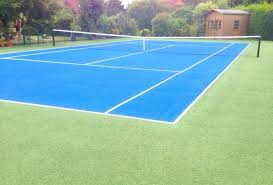Basketball is a game of speed, agility, and strategy, but the foundation of every successful match is a well-designed court. High-quality basketball court construction ensures player safety, enhances performance, and provides long-lasting durability. Behind every professional-grade court are experienced basketball court builders who combine technical knowledge, engineering skills, and sports-specific expertise to deliver world-class playing surfaces.
Importance of Basketball Court Construction
The construction of a basketball court is not just about laying down a surface. It involves careful planning, precise measurements, and the right choice of materials. A well-constructed court offers:
- Safety: Proper flooring reduces the risk of injuries by providing adequate shock absorption.
- Performance: Consistent bounce and grip help athletes perform at their best.
- Durability: High-quality construction ensures the court withstands heavy use and changing weather conditions.
- Aesthetic Appeal: A professionally finished court enhances the overall look of a sports facility, school, or community space.
Steps in Basketball Court Construction
- Site Preparation – Selecting and leveling the site, ensuring good drainage.
- Foundation – Building a stable base using concrete or asphalt to prevent cracks.
- Surface Installation – Applying the chosen flooring such as hardwood, synthetic, or acrylic, depending on indoor or outdoor use.
- Court Markings – Accurate line painting for official gameplay dimensions.
- Accessories – Installing basketball hoops, backboards, fences, and lighting.
Every step requires precision, as even small errors in leveling or markings can affect the quality of play.
Role of Basketball Court Builders
Professional builders play a vital role in ensuring courts meet international standards. Their expertise includes:
- Selecting the right materials based on location and budget.
- Ensuring compliance with safety and sports regulations.
- Using advanced tools and technology for precision.
- Offering long-term maintenance solutions to keep the court in top condition.
Builders also advise clients on whether to choose hardwood for indoor courts, acrylic for outdoor courts, or synthetic flooring for multi-purpose facilities.
Types of Basketball Court Surfaces
- Hardwood Flooring: Preferred for professional indoor courts, offering excellent bounce and aesthetics.
- Synthetic Flooring: Durable, cost-effective, and suitable for both indoor and outdoor use.
- Acrylic Surfaces: Popular for outdoor courts due to their weather resistance.
- Rubber Flooring: Provides maximum cushioning and safety, often used in schools and training centers.
Maintenance for Longevity
Even with top-quality construction, basketball courts require regular care. Maintenance includes cleaning, resurfacing, polishing hardwood, repainting faded lines, and checking for cracks or damage. With proper upkeep, courts can last for decades.
Conclusion
Basketball courts are more than just play areas—they are investments in sports excellence, safety, and community development. By relying on skilled builders and focusing on professional construction, facility owners can create courts that deliver long-term value. Whether for recreational games or professional tournaments, a well-constructed basketball court ensures athletes enjoy every moment of the game.

